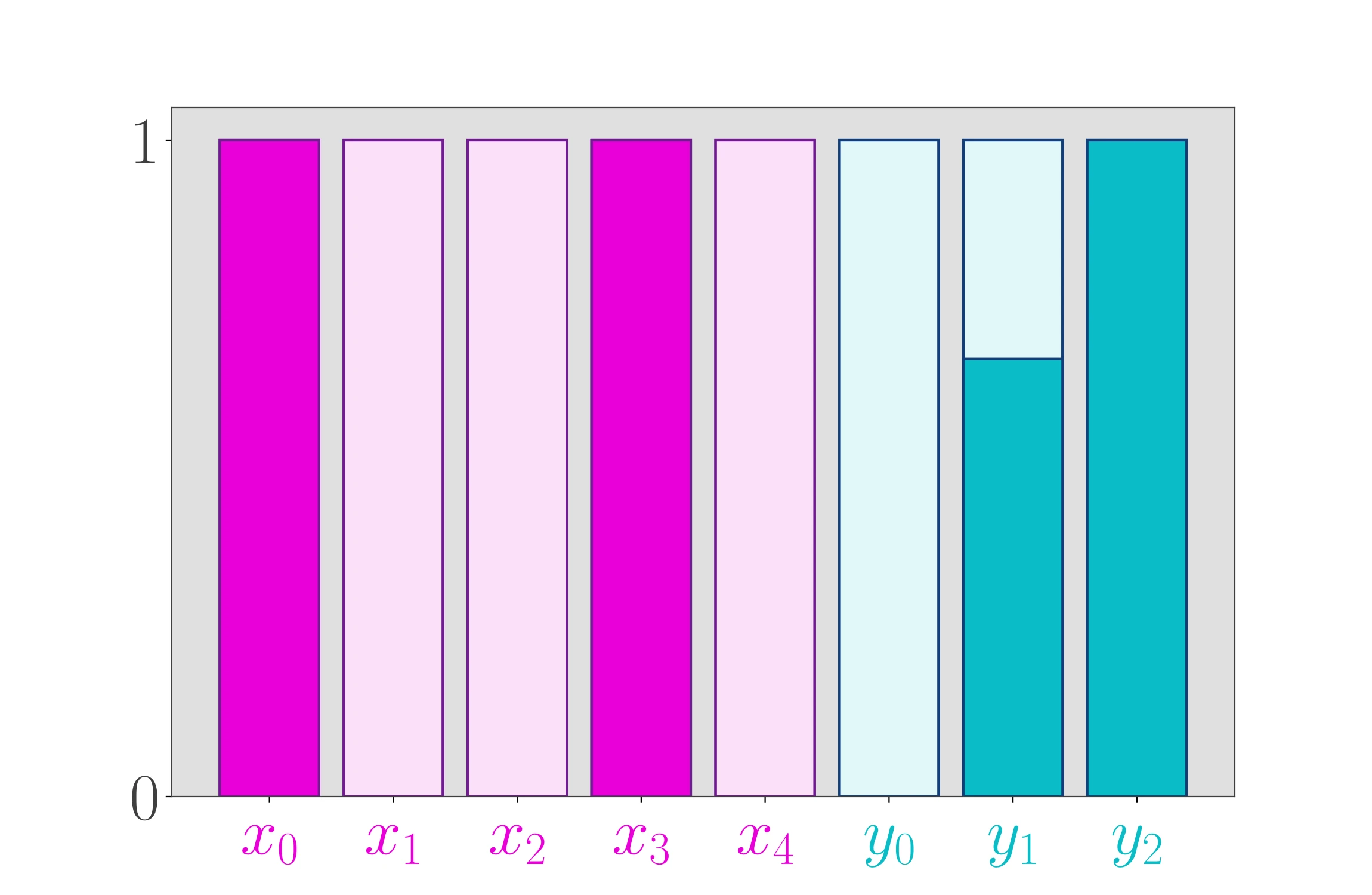The Mixed Integer 0-1 Knapsack Problem
Note: Thanks to Shraddha Ghatkar for pointing out an error in my implementation that I have since fixed.
Shortly after publishing my last blog post on the 0-1 knapsack problem, I was privately messaged with a question about using dynamic programming to solve a variant of the standard 0-1 knapsack problem in which some of the binary variables are relaxed to the unit interval. In this post, I address how to modify the dynamic programming approach to solve this variant.
Standard 0-1 Knapsack
Recall the formulation of the standard 0-1 knapsack problem:
This problem may be solved via dynamic programming using the value function
Mixed Integer 0-1 Knapsack
To formulate the mixed integer variant, we add new continuous variables $y_j, j=0,\ldots,m-1$ corresponding to $m$ continuous items. Each item $j$ has size $r_j$ and value $t_j$. The formulation for this variant is
To solve this variant using dynamic programming, we use a very similar value function:
Below, I present a Python implementation of the dynamic programming approach for this problem.
The function knapsack_mixed takes as arguments the list of discrete item sizes $\boldsymbol{a},$
the list of continuous item sizes $\boldsymbol{r},$ the knapsack capacity $b,$ the list of discrete
item values $\boldsymbol{c},$ and the list of continuous item values $\boldsymbol{t}$.
1from functools import cache
2
3
4def knapsack_mixed(a, r, b, c, t):
5
6 @cache
7 def Z(i, k):
8 if i >= 0 and k >= 0:
9 return max(Z(i - 1, k), Z(i - 1, k - a[i]) + c[i])
10 elif k < 0:
11 return -float('inf')
12 else:
13 Zhat = 0
14 for j in sorted(range(len(r)), key=lambda j: t[j] / r[j], reverse=True):
15 Zhat += t[j] * min(1, k / r[j])
16 k -= r[j] * min(1, k / r[j])
17 if k == 0:
18 break
19 return Zhat
20
21 def X_and_Y(k):
22 X_opt = [0] * len(a)
23 for i in range(len(a) - 1, -1, -1):
24 X_opt[i] = int(Z(i - 1, k - a[i]) + c[i] > Z(i - 1, k))
25 k -= a[i] * X_opt[i]
26 if k == 0:
27 break
28 Y_opt = [0] * len(r)
29 for j in sorted(range(len(r)), key=lambda j: t[j] / r[j], reverse=True):
30 Y_opt[j] = min(1, k / r[j])
31 k -= r[j] * Y_opt[j]
32 if k == 0:
33 break
34 return X_opt, Y_opt
35
36 return Z(len(a) - 1, b), *X_and_Y(b)Below, we split the items from the previous post into discrete and continuous sets (not necessarily in the same order). We then run our dynamic programming implementation to find the optimal solution.
|
|
The solution involves putting 6 of the 9 discrete items into the knapsack. Additionally, two of the continuous items are put in their entirety into the knapsack, and two-fifths of another continuous item is also put into the knapsack.
Invoking the function with r and t as empty lists will produce a solution to a standard 0-1
knapsack problem. Similarly, invoking the function with a and c as empty lists will produce a
solution to the continuous knapsack problem (in which the quantity of each item is bounded to
$[0, 1]$).
You May Also Like
The 0-1 Knapsack Problem, Revisited
When I first started this blog in 2019, one of my first posts was …
The 0-1 Knapsack Problem
The knapsack problem is textbook material in fields like computer …
Optimizing Yield of a Minecraft Farm via SciPy
I do not have much time or interest for playing Minecraft anymore, but …




